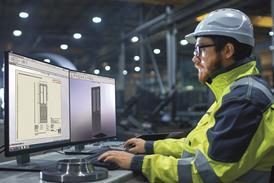Industry 4.0 is an attractive vision for the future of the construction industry, but we need the right skills in the sector to leverage it
The fourth industrial revolution is upon us, as we start to benefit from access to better data and increased automation. New technology is ushering in a new age of productivity that will transform our industries.
This is an attractive vision of the future, particularly in construction where productivity gains have been hard to come by in the last twenty years. However, the reality is that all the new technology in the world isn’t going to help us if the people in the sector aren’t equipped with the skills to leverage it.
We are already suffering a skills shortage, and we’re acutely aware that as technology moves forwards in leaps and bounds the UK’s construction skills profile is lagging behind. What use is the latest drone surveying equipment or off-site manufacturing modules if we can’t employ enough people with the right skills to operate or install them?
Look deeper, however, and we see a golden opportunity here: a real chance to take hold of this new technology and leverage it for the collective good of the industry.
Our latest report, ‘Moving to Industry 4.0’, shows that by 2040, over 600,000 existing construction jobs could be automated, freeing up a huge portion of our workforce that could be reskilled or retrained to meet emerging technological needs. This won’t be easy.
Such a huge skills transformation exercise would have to dwarf anything we’ve done before in construction – and it would need collaboration between contractors, clients, the supply chain and government in order to make a real impact.
It’s not just retraining of existing staff. It also means convincing digital-native millennials and the generation after them that construction is the world for them, and to do that we’ll need to change our image.
That means more effectively advertising the benefits of a life in building; the range of career options, the chance for quick progression and the satisfaction of building structures that make a tangible difference to the world.
It also means beginning to project a culture of enthusiasm, collaboration and adventure; it means trying to make construction ‘cool’. To achieve all that, we have laid out an ambitious plan to do just that in our report.
Firstly, we must ensure that our training programmes – and our engagement with schools – are built around the latest technology advancements in virtual reality, 3D printing and automation. By placing these technologies at the heart of what we do we not only make sure our workforce is better equipped to handle them; we also begin to tell a new story to those who are yet to join the sector.
Secondly, we must improve our data on what skills we’ll need in the future. By improving our labour market intelligence across all sectors of the economy we can ensure that workers looking to retrain can make better decisions about what skills they’ll need.
Finally, we must revolutionise the post-16 training options our industry relies on. Current reforms do not go far enough – both traditional apprenticeships and the new trailblazer programmes need to incorporate the future need for a multi-skilled, adaptive workforce.
If we can do all of that, we’ll begin to move the dial – but those suggestions are only a start. The construction sector is going to look very different in a decade or two – and so is its workforce. Are we going to be ready for it? Or will we fall behind?




























No comments yet